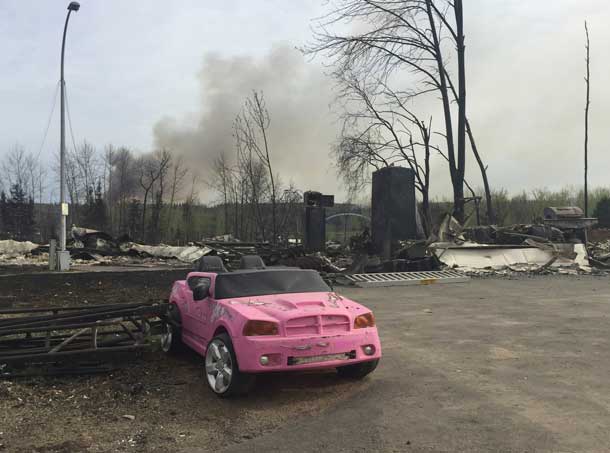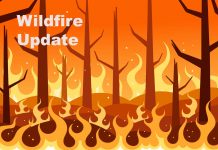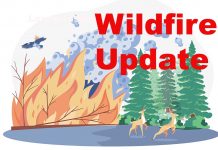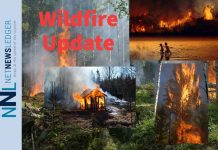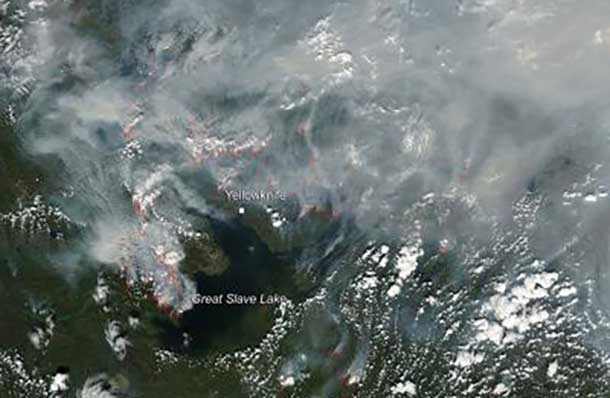
Wild Fire Situation in Region Stable
THUNDER BAY – There are 252 personnel from the Ontario Ministry of Natural Resources and Forestry on assignment in British Columbia (125) and the Northwest Territories (127) to assist in ongoing forest fire management efforts.
Ontario has also provided equipment including 430 power pumps, 6,000 lengths of hose and two values protection units to British Columbia.
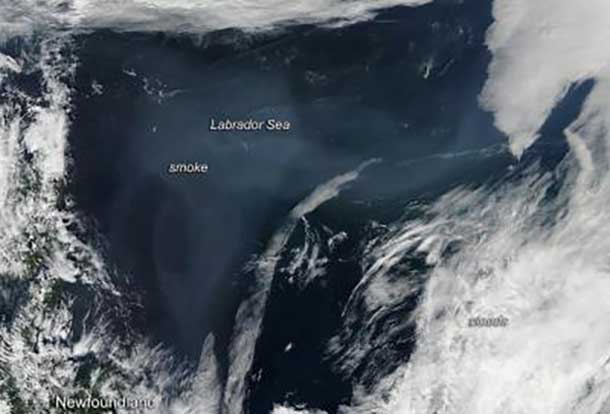
The fires on the shores of the Great Slave Lake in the Northwest Territories in Canada do not seem in any hurry to be extinguished. In this natural-color satellite image which was collected by the Moderate Resolution Imaging Spectroradiometer (MODIS) aboard the Aqua satellite on July 29, 2014 dozens of fires and copious amounts of smoke are evident. Actively burning areas, detected by MODIS’s thermal bands, are outlined in red.
This smoke has risen off the fires in the Northwest Territories and has been carried along the jet streams to the Labrador Sea which borders both Labrador and Newfoundland and most probably beyond. This natural-color satellite image was also collected by the Moderate Resolution Imaging Spectroradiometer (MODIS) aboard the Aqua satellite on July 29, 2014.
Northwestern Ontario Fire Scene Update
There were no new fires confirmed in the Northwest Region by the afternoon of August 7. The remaining active fire, Red Lake District Fire Number 17, is being observed at 152 ha and is located in Woodland Caribou Provincial Park. Kenora District Fire Number 11 was declared out August 6 at 0.2 ha.
The degree of concern for fire behaviour is moderate across most of the region, with the exception of the northern districts which have a high hazard. For Thursday August 7, most of the region will start with sunny skies until a system over northern Manitoba brings clouds with showers or a risk of thunderstorms into the western districts. On Friday August 8, rain and thunderstorms will continue through the western and northern districts. The eastern districts will remain in sunshine with temperatures in the mid to high twenties.
Smoke Hazards
Fire is an obvious danger, but smoke that drifts away from its source and blankets populated areas also has its dangers. The smoke released by any type of fire (forest, brush, crop, structure, tires, waste or wood burning) is a mixture of particles and chemicals produced by incomplete burning of carbon-containing materials. All smoke contains carbon monoxide, carbon dioxide and particulate matter (PM or soot). Smoke can contain many different chemicals, including aldehydes, acid gases, sulfur dioxide, nitrogen oxides, polycyclic aromatic hydrocarbons (PAHs), benzene, toluene, styrene, metals and dioxins. The type and amount of particles and chemicals in smoke varies depending on what is burning, how much oxygen is available, and the burn temperature.
Exposure to high levels of smoke should be avoided. Individuals are advised to limit their physical exertion if exposure to high levels of smoke cannot be avoided. Individuals with cardiovascular or respiratory conditions (e.g., asthma), fetuses, infants, young children, and the elderly may be more vulnerable to the health effects of smoke exposure.






